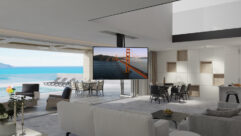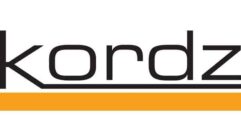
Installation Trends: Streamlined Sportscasting
May 1, 2008 12:00 PM,
Daniel Keller
Stadium broadcasting systems shrink in size as they grow in capabilities.

Rochester Red Wings Stadium is embracing digital technology to streamline its live broadcasts.
No one will deny that the digital revolution has had a profound and fundamental effect on the world of professional audio and video production. But while digital computer-based technologies have become all but ubiquitous in recording and postproduction, the live sectors of sound and video production have been somewhat more reserved in their move to digital, only recently beginning to chomp at the proverbial bit.
Live digital production systems such as Digidesign’s Venue have made dramatic inroads in touring and fixed installations alike. Their direct integration with digital audio workstation technology and signal processing has marked a major shift in the nature of live sound. But in the spontaneous, instant-replay world of live sportscasting, engineers have generally stuck with the tried and true, reluctant to risk even a minor on-air fiasco in the face of anything less than rock-solid, well-known technologies. It’s only recently that a new generation of live-video-production systems from companies such as Ross Video, Grass Valley, and Broadcast Pix, among others, have begun to affect the world of live sports video production by infiltrating their way into permanently installed, inhouse production facilities at major sporting venues.
“Now that hard disk technologies and the systems based on them have become more robust, we’re seeing a huge trend in video production toward all-in digital-production workstation products,” says Mark Siegel, president of Seattle-based Advanced Broadcast Solutions (ABS). “For people working in the high-pressure environments of live broadcast and performance, I think the dependability factor was the major obstacle. With that resolved, we’re now seeing manufacturers driving the shift to digital.”
Certainly the benefits of the digital domain are ideally suited for live production. The immediacy of nonlinear access eliminates the age-old issues associated with shuttling tape carts. The power of onscreen editing and digital-signal processing delivers results formerly attainable only with multiple pieces of big-budget equipment, and it does so with an easier, more user-friendly learning curve and a significantly lower price tag.
“Technology in general is being driven by the consumer sector these days, and a lot of this technology is coming out of the consumer base,” Siegel says. “The result is a new generation of products that combine multiple technologies into a single, integrated workstation. Essentially, it’s a big control room in a box. Since these tools are more software-based and more integrated, they can solve more challenges than using multiple individual tools together.”
Installation Trends: Streamlined Sportscasting
May 1, 2008 12:00 PM,
Daniel Keller
Stadium broadcasting systems shrink in size as they grow in capabilities.

The HD Group upgraded the Rochester Red Wings’ inhouse production suite with a Broadcast Pix Slate 2100, creating the ability to record the games for rebroadcast to both the local network and the regional network affiliates.
OUT WITH THE OLD
The Rangers Ballpark in Arlington, Texas, is a prime example of the new face of live production in a sporting venue. Dallas-based Accent Audio/Video recently equipped the stadium with a Broadcast Pix Slate 2100 switching-and-production system, which is used within the park to transmit live video and replays onto the stadium’s large-screen Daktronics outfield display. The Slate 2100 integrates multiview monitoring, a character generator, a clip store, and aspect-ratio conversion into a single workstation — connecting via fiber to four live-production trucks, live cameras, and other video feeds throughout the venue and outputting high-definition video to the Daktronics display.
As Chuck Morgan — the Rangers’ vice president of entertainment and special events — explains, the Slate workstation allowed his production team to replace a control room full of legacy products from the 1990s.
“At the outset, it was a practical decision,” Morgan says. “Our vintage Grass Valley switcher was no longer supported, so we were due for a system upgrade in any case. Going with the Slate 2100 enabled us to eliminate several other pieces of legacy technology as well. We had a separate clip machine, separate computer graphics machine, separate still store, and separate digital effects generator. The Slate combines all those technologies into a single unit.”
Morgan says that the ability to perform the facility upgrade quickly and with minimum complications were other factors that made the decision an easy one.
“The installation was really a pretty simple project, and we were only down for a total of three days,” he says. “We took the inputs from the Grass Valley switcher, spliced a few cables, and plugged everything into the Slate. Our control-room wiring scheme was pretty well planned to begin with, which made things easy. Honestly, the biggest challenge was probably just deciding where to put the unit.”
Three new Sony 40in. LCD screens were added in the control room for monitoring purposes, but Morgan says that number will probably grow when the rest of the system is upgraded to HD.
“We’ve still got about 35 or 40 CRT monitors, which we’ll eventually replace,” he says. “We really don’t need them anymore, since you can view most of it on the Slate and the Sony monitors. In fact, one of our maintenance guys remarked that once we get rid of the CRTs, it will probably cut down pretty dramatically on our air-conditioning bills.”
Installation Trends: Streamlined Sportscasting
May 1, 2008 12:00 PM,
Daniel Keller
Stadium broadcasting systems shrink in size as they grow in capabilities.

Accent Audio/Video replaced the Rangers Ballpark’s outdated Grass Valley switcher with a Slate 2100, allowing the facility to transmit live video and replays onto the stadium’s Daktronics outfield display.
IT’S THE ECONOMY, STUPID
Needless to say, digital’s ability to reduce the bottom line in this manner is something that appeals to organizations such as the Rangers. “For a sports franchise, there are really only two ways to make more money: either find new ways to generate revenue or cut down on overhead. These technologies actually address both sides of that equation,” Siegel says.
“In Major League Baseball in particular, most of the teams’ production staffs have always been stretched to the limit,” says Ken Scott, ABS director of broadcast engineering. “They’ve got barely enough people to handle inhouse production, let alone full production for broadcast. Nowadays, Major League Baseball is taking the feed from all its parks and putting it directly over the Web as well, which stretches production resources even further. So the biggest challenge is to try and do even more with the people they currently have. That’s why these types of products are so appealing, because they can have one or two people handle a production that used to require at least four or five sets of hands.”
At the Rangers’ stadium, practical experience seems to bear this out.
“The new system has really streamlined operations and reduced the number of hands-on we need,” Morgan says. “Our operators can perform multiple functions, and the control room environment is far less hectic. In theory, you could run the whole production with just one person, though for us, that’s not really practical.”
The system has also reduced or eliminated a number of video-format compatibility issues, which was among the most time-consuming problems for stadium production facility staff to overcome.
“With any video clip we wanted to use, we’d have to take time before the game to do format conversions and import it for use during the production,” Morgan says. “The Slate can handle playback of multiple formats, so we only need to drag and drop a clip to play it back. It not only saves us time in preproduction, it also enables us to be a bit more spontaneous in selecting clips during a live production.”
Installation Trends: Streamlined Sportscasting
May 1, 2008 12:00 PM,
Daniel Keller
Stadium broadcasting systems shrink in size as they grow in capabilities.
TRICKLE-DOWN THEORY
The Rochester Red Wings, a Minnesota Twins Triple A Minor League affiliate, also added a Slate 2100 to its inhouse production suite. The system upgrade, courtesy of Buffalo, N.Y.-based The HD Group, was designed to address multiple needs for the minor-league team.
“For the Red Wings project, we needed to provide functionality that would facilitate not only video for the scoreboard, but also the ability to record the games for rebroadcast to both the local network and the regional Time Warner network affiliates,” says HD Group President Bob Ferrulo. “The Slate has the capability to provide two discrete program feeds, which enabled us to accomplish both tasks with a single unit.”
For the Red Wings organization, the benefits of combining inhouse and broadcast tasks were significant.
“In the major leagues, larger stadiums are traditionally designed with separate production facilities for inhouse video and broadcast,” Ferrulo says. “The trend now — particularly at the minor-league and collegiate levels — is to network those facilities together, combining them into a single production suite. All-in-one technologies like the Slate make that a very viable solution. The capabilities of this equipment — and the significantly lower cost of installing these systems — has allowed these facilities to do stuff they could never have accomplished even a few years ago, in terms of cost, in terms of functionality, and in terms of personnel.”
In addition to cutting costs, the Red Wings have been able to use the technology to generate new sources of revenue.
“They used to have to bring in Time Warner engineers to handle the broadcast production,” Ferrulo says. “With the new system, they can provide the feed directly. Since Time Warner no longer has to provide personnel, that’s enabled the Red Wings organization to negotiate a new arrangement where they’re sharing ad revenues.”
“We’re seeing a significant trend in this direction at the minor league and collegiate levels,” Scott says. “We’ve recently completed a number of projects here in the Pacific Northwest, and there’s a tremendous move on the part of these large colleges and universities toward managing their own broadcasting. It extends to a wide range of potential sources of revenue, from pay-per-view and cable access to podcasting and webcasting.”
One of the age-old concerns used to be that broadcasting an event live would cannibalize ticket sales. In fact, results have shown the opposite to be true.
Installation Trends: Streamlined Sportscasting
May 1, 2008 12:00 PM,
Daniel Keller
Stadium broadcasting systems shrink in size as they grow in capabilities.
A big part of that draw seems to be the ability to now provide a high-definition in-park experience comparable to what viewers experience on broadcast television.
“With the ability to provide high-definition video on the inhouse displays, you’d be surprised how much time people at a game actually spend watching the big screen,” Siegel says. “At Safeco Field [in Seattle], we put HD screens into all the suites a couple of years ago. We did a survey of suite holders and asked them how much time they actually spend watching the game, looking at the field through the glass versus watching the video. Almost 60 percent said they prefer to mainly watch the screens. It makes sense, if you think about it — it’s nothing like watching the game at home. People can sponsor clients, bring them to the game, and get the ambience and excitement of the stadium, get their food and drinks, and get all the benefits of the technology at the same time. It’s really the best of both worlds.”
EVER-GROWING POOL
The affordability of these new integrated digital workstations has begun to place the ability to attain that HD quality — both at broadcast level and in the park — in the hands of a more diverse set of players.
“Let’s face it; high definition is really the ideal medium for viewing sports,” Siegel says. “Large venues, large displays — anyone who is building a ballpark or sports venue these days wants high def. Traditionally, the cost of converting to HD has been very high, and people have been looking more and more for cost-effective ways to accomplish going that route. As these new technologies begin to become more viable and affordable, we’re seeing a growing adoption at the minor-league and collegiate levels.”
Not surprisingly, Siegel says some of the most aggressive growth in the market for digital broadcast technologies can be found in the world of collegiate sports.
“Pro ball is a finite pool — there are only so many major-league teams,” he says. “But more significantly, the college teams are in many ways more eager to get involved in this world. They’re just starting to taste the wide range of possibilities involved in doing their own productions. The biggest hurdle has always been figuring out how to get started; the cost of putting in a full-on HD broadcast production facility has always been out of reach for most of these organizations, and this new technology has begun to alter that perception. People used to roll in with production trucks worth $10 [million] to $20 million. Now you can put a system in place that can cover a game with broadcast-quality HD for under $1 million.”
“The college crowd is also, generally speaking, a very creative segment,” Scott says. “The major league production guys have become somewhat accustomed to the gear they’ve been working with for many years, and they’re somewhat established in their ways. But these younger guys with the collegiate teams tend to have less in the way of preconceived notions on production techniques. They’re the computer generation, and they’re much more PC-savvy — less likely to read the manual and more prone to experimentation.”
Of course, it’s not just the young pups who are excited by the potential of these new technologies. “Our guys have been totally inspired by the new system and what we can accomplish with it,” Morgan says. “The difference in picture quality, the editing power, the range of effects and transitions — it’s a whole new creative palette for us. With our old system, you were limited only by your imagination. The new system takes your imagination even further.”
Daniel Kelleris an audio industry veteran and principal of Get It In Writing.










